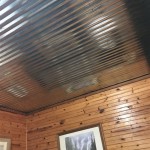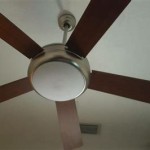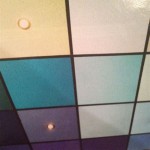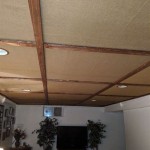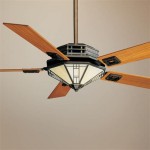A Guide To Ceiling Light Without Wiring In House
Adding ceiling lights can dramatically improve the ambiance and functionality of a room. However, the prospect of extensive electrical work, involving wiring and potential damage to existing structures, often deters many homeowners. Fortunately, various solutions exist for installing ceiling lights without requiring hardwired electrical connections. These methods provide a convenient and aesthetically pleasing alternative, allowing individuals to enhance their lighting without the complexities of traditional electrical installations.
This guide delves into several methods for incorporating ceiling lights without wiring. It covers battery-powered options, plug-in fixtures, and remote-controlled systems, outlining their advantages, disadvantages, and appropriate applications. Furthermore, it provides practical advice on selecting the right type of lighting and ensuring a safe and visually appealing installation.
Battery-Powered Ceiling Lights
Battery-powered ceiling lights offer a straightforward solution for illumination without any wiring. These lights typically utilize LED bulbs, chosen for their energy efficiency and long lifespan, minimizing battery replacement frequency. They are available in various styles, ranging from simple puck lights to more decorative fixtures that resemble traditional ceiling lights.
The primary advantage of battery-powered lights is their ease of installation. Most models attach to the ceiling using adhesive strips or screws, requiring no specialized tools or electrical expertise. This makes them ideal for renters, individuals uncomfortable with electrical work, or those looking for a temporary lighting solution. Furthermore, battery-powered lights are versatile and can be placed virtually anywhere, offering flexibility in designing the lighting layout.
However, battery-powered lights have limitations. The brightness is generally lower compared to hardwired fixtures, making them more suitable for accent lighting or small spaces. Battery life is also a significant concern. Depending on the type of battery and the frequency of use, batteries may need to be replaced regularly, which can become costly and inconvenient. Some models offer rechargeable batteries, which mitigate this issue to some extent.
When selecting battery-powered ceiling lights, consider the type of battery used (e.g., AA, AAA, or rechargeable lithium-ion), the light output (measured in lumens), and the design of the fixture. Ensure the chosen model is appropriate for the intended use and complements the existing décor.
Plug-In Pendant Lights and Swag Lights
Plug-in pendant lights and swag lights offer a stylish alternative for adding overhead lighting without hardwiring. These fixtures feature a long cord that plugs directly into a wall outlet, eliminating the need for electrical connections within the ceiling. The light fixture is suspended from the ceiling using hooks or a chain, allowing for adjustable height and placement.
The installation of plug-in pendant lights is relatively simple. After hanging the fixture from the ceiling, the cord is draped artistically along the wall or concealed using cord covers. This method provides a more permanent and aesthetically pleasing solution compared to battery-powered lights, offering a wider range of styles and brightness levels. Swag lights, specifically, are designed with a decorative chain or cord that adds to the visual appeal.
One potential drawback of plug-in pendant lights is the visibility of the cord. While cord covers and creative draping can minimize its impact, the cord remains a visible element. Careful planning is crucial to ensure the cord’s placement does not detract from the overall aesthetic of the room. Additionally, the proximity of the wall outlet limits the placement of the light fixture. The fixture must be located within reach of an outlet, which may restrict design options.
When choosing plug-in pendant lights, consider the length of the cord, the style of the fixture, and the type of bulb used. LED bulbs are recommended for energy efficiency and longevity. Ensure the fixture’s design complements the room’s décor and that the cord’s placement is carefully planned to minimize its visibility.
Remote-Controlled Lighting Systems
Remote-controlled lighting systems offer a more sophisticated solution for wireless ceiling lights. These systems typically consist of a light fixture, a receiver, and a remote control. The receiver is installed near the light fixture and connected to a standard wall outlet. The remote control allows the user to turn the light on and off, adjust the brightness, and even change the color temperature without physically accessing the fixture.
The primary advantage of remote-controlled lighting systems is their convenience and versatility. They offer a seamless blend of traditional lighting functionality with the ease of wireless control. The light fixture can be mounted on the ceiling like a standard hardwired fixture, providing a more integrated look. The remote control eliminates the need for wall switches, simplifying the wiring process and offering greater flexibility in lighting design. Some systems can even be integrated with smart home devices for voice control and automated scheduling.
One potential disadvantage is the reliance on the remote control. Losing the remote control can render the light fixture unusable. However, many systems offer alternative control options, such as a wall-mounted switch or a smartphone app. The cost of remote-controlled lighting systems can also be higher compared to other wireless options.
When selecting a remote-controlled lighting system, consider the range of the remote control, the compatibility with smart home devices, and the availability of alternative control options. Ensure the chosen system meets the specific lighting needs and integrates seamlessly with the existing décor. Consider the light output, dimming capabilities, and color temperature settings. Read reviews and compare features from various brands before making a purchase. Ensure the system has safety certifications and complies with local electrical codes.
Additionally, consider the complexity of the installation process. While the wiring is simplified compared to hardwired fixtures, some electrical knowledge may be required to connect the receiver to the wall outlet. If unsure, it is recommended to consult a qualified electrician.
The placement of the receiver is crucial for optimal performance. It should be located within range of the remote control and away from any obstructions that could interfere with the signal. Follow the manufacturer’s instructions carefully to ensure proper installation and operation of the system.
Proper maintenance is also essential to prolong the life of the lighting system. Regularly clean the fixture and remote control. Replace batteries in the remote control as needed. If the system malfunctions, consult the manufacturer’s troubleshooting guide or contact customer service for assistance.
By carefully considering these factors, homeowners can select a remote-controlled lighting system that provides a convenient, versatile, and aesthetically pleasing solution for wireless ceiling lights.
Before starting any installation, it is always best to review local building codes and safety regulations. If there is any doubt about how to safely install any of these lighting options, consult a qualified electrician to avoid potential hazards.

How To Install A Ceiling Light Without Existing Wiring Best Answers Here

Ceiling Light Designs For Your Home Decorative Lights
How Much Does It Cost To Install A Ceiling Light Without Existing Wiring Quora

How To Install Modern Ceiling Lights

How To Replace Install A Light Fixture The Art Of Manliness

9 Lighting Ideas For Rooms Without Ceiling Lights Blisslights

Don T Miss Out On These Exclusive Types Of Ceiling Lights

Creative Ideas For Lighting Rooms Without Ceiling Lights Lightlady Studio

How To Install A Light Fixture Diy Home Improvement

How To Install A Flush Mount Led Ceiling Light Fixture
Related Posts


